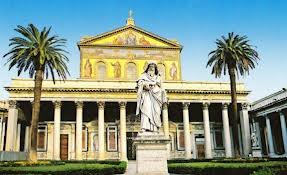Nov 18 – St Odo of Cluny (878-942) abbot
Summary: Saint Odo was the second abbot of Cluny. He enacted various reforms in the Cluniac monastery system of France and Italy.
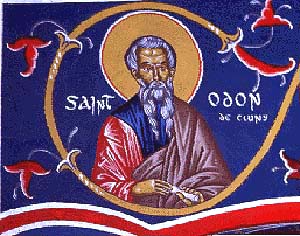
Patrick Duffy outlines some details of his life and the context in which he lived.
Cluny
The Benedictine Abbey of Cluny was founded in AD 910 by William I, Count of Auvergne, who installed Berno of Baume as its first abbot and placed the abbey under the immediate authority of the Pope. In this way Cluny was immune from all secular interference.
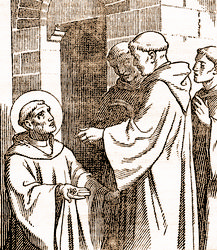
Odo had been educated at the court of William. At nineteen he received the tonsure, and became a canon in the church of Saint Martin at Tours. Here he ceased reading Virgil and other profane authors, resolving only to read such books as nourished Christian devotion.
He studied theology for four years at Paris and on his return to Tours devoted himself entirely to prayer and the study of the Scriptures. Reading the Rule of St Benedict, he decided to become a monk under Berno at the abbey of Baume. Soon he became a priest and when Berno became the founder and first abbot of Cluny Abbey in 910, Odo followed him there, bringing his library. On Berno’s death in 927, Odo became the second abbot of Cluny.
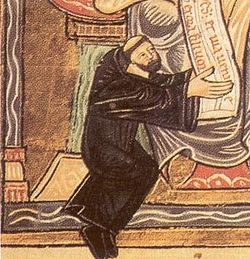
Most Benedictine monasteries up till then were independent, but those founded from Cluny remained priories subject to the mother house. In this way Cluny became the model of monasticism for over a century in both France and Italy. Odo insisted on the strict observance of silence as absolutely necessary for interior solitude and the communion of a soul with God. He also stressed humility, obedience, self-denial and especially chastity.
Influence in Italy
Odo visited Italy several times between 936 and 942, founding in Rome the monastery of Our Lady on the Aventine and influenced reform in other monasteries, such as Subiaco and Monte Cassino.
Death at Tours
Out of devotion to Saint Martin, Odo wanted to die at Tours, and hastened there in his last illness. He died on the 18th of November 942 and was buried there.
___________________
******************************
Quiet Wisdom Sayings for a Noisy world
“Silence is the sleep that nourishes wisdom.” …
“Speak only if it improves upon the silence.” …
“Silence is a source of great strength.” …
“In the silence, we can hear the whispers of our soul.”
~ The Quiet Ones ~
******************************
Summary: Dedication of the Basilicas of Ss Peter and Paul in Rome. St Peters built in the 16th and 17th centuries, and Saint Paul’s Basilica, built in the 19th century, both replaced older buildings erected by Constantine in the 4th century over the tombs of the apostles Peter and Paul. The dedications of these churches have been commemorated together on this day since the 12th century.
Patrick Duffy gives some facts about these two basilicas +.
The four major basilicas in Rome have a feast of their dedication in the Liturgical Calendar, highlighting the link between Rome and the universal Church.
St Mary Major’s (5th August) and
St John Lateran’s (9th November.) The other two,
St Peter’s Basilica and
St Paul’s-outside-the-Walls, celebrated today, (18th November)
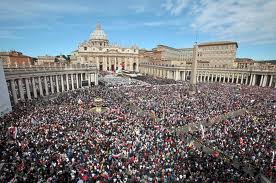
St Peter’s is built on the Vatican Hill, where Peter is thought to have been buried. The original building was built during the reign of Constantine. The popes only began to live there after the return of the papacy from Avignon to Rome. The present building of St Peter’s was begun by Pope Julius II in 1506 and for 120 years underwent many alterations under a succession of architects (Bramante, Raphael, Peuzzi and Sangallo). Its final form derives from Michelangelo who died (1564) before the erection of its great dome. The Basilica was finally consecrated by Pope Urban VIII on November 18, 1626. Excavations begun in 1942 discovered that the basilica was built over a large Roman cemetery: Peter’s tomb is thought to be located at 100 metres under the main altar.
Basilica of St Paul’s-Outside-the-Walls
St Paul’s-outside-the-Walls (image above) is located about seven miles from Rome near Tre Fontane on the Ostian Way, where Paul was said to have been martyred and the emperor Constantine began a basilica. This basilica was enlarged under Theodosius I and Pope St Leo the Great. It was burned to the ground in 1823. During reconstruction a fourth-century tomb was found, with the inscription PAULO APOST MART: “To Paul, apostle and martyr”. A new basilica, on the lines of the old one, was consecrated by Pope Blessed Pius IX on December 10, 1854. In the year of the Apostle Paul 2008-9 (the 2,000th anniversary of the apostle’s birth) it hosted the opening Mass for the Synod of Bishops on the Word of God.
Relevance of the Feast

We are all members of our own local church, but we also are members of the mother-church in Rome, symbol of the universal Church.
This feast helps us move beyond our narrow geographical confines to a sense of the universal Church.
See also 9th November – the Dedication of the Lateran Basilica of St John.
<El Greco’s – Ss Peter and Paul
____________________
******************************
Memorable Sayings for Today
“Their sound has gone out into all the earth
and their words to the ends of the world”
~ Psalm 19 ~


